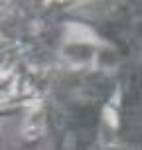Prior to the Russo-Japanese War, countries constructed their battleships with mixed batteries of mainly 6-inch, 8-inch, 10-inch and 12-inch guns, with the intent that these battleships fight on the battle line in a close-quarter, decisive fleet action. The battle demonstrated that the big guns with longer ranges were more advantageous and favorable during naval battles, not mixed batteries of different sizes. As early as 1904, the Imperial Japanese Navy developed the Satsuma (laid down a few days before the Battle of Tsushima, on May 15th, 1905), the first ship to be developed and laid down as an all-big-gun battleship. Great Britain would soon follow suit, laying down the keel of HMS Dreadnought in October 1905, and becoming the first to complete an "all big gunned" battleship. HMS Dreadnought was launched in 1906, and created the separating date between "Pre-Dreadnoughts" prior to 1906 and "Dreadnoughts" from 1906 afterward.
The Japanese Combined Fleet and the Russian Baltic Fleet, sent over from Europe, fought in the straits between Korea and Japan near the Tsushima Island group.

Earlier, the Russian Pacific Fleet had been dispersed at the Battle of Shantung on August 10, 1904 and eventually sunk in Port Arthur. The Baltic Fleet sailed through the North Sea, caused a diplomatic incident off Dogger Bank when they attacked the British fishing fleet there, and then proceeded around Africa and touched port in Indochina. The voyage was long and arduous, and the morale of the crew began to plummet. The Russians were ordered to break the blockade of Port Arthur (now known as Lushun), but the settlement had already fallen before the arrival of the ships and so they tried to reach the Russian port of Vladivostok.
The Russians could have sailed through one of three possible straits to reach Vladivostok: La Perouse, Tsugaru, and Tsushima. Admiral Rozhestvensky chose Tsushima in an effort to simplify his route. Admiral Togo, based at Pusan, Korea also believed Tsushima would be the preferred Russian course. The Tsushima Strait is the body of water eastwards of the Tsushima Island group located midway between the Japanese island of Kyushu and the Korean Peninsula, the shortest and most direct route from Indochina. The other two routes would have required the fleet to sail to the east of Japan.
The Russian fleet was sighted when two trailing hospital ships were discovered by the Japanese cruiser fleet. The Russians sailed from south-south-west to north-north-east; the Japanese fleet from west to north-east. Admiral Togo ordered the fleet to turn in sequence, which enabled his ships to take the same course as the Russians, though risking each battleship in turn. This U-turn was successful. The two lines of battleships stabilized their distance at 6200 meters and exchanged gunfire. This marked the beginning of modern naval gunnery. Traditionally, ships were to begin their engagements at considerably closer range. Togo immediately gained the advantage of surprise. The Japanese fleets had practiced gunnery continually since the beginning of the war, using sub-caliber adapters for their cannon. The Japanese had superior gunners, and hit their targets more often. Furthermore, the Japanese used mostly high explosive shells with shimose (melinite), which was designed to explode on contact and wreck the upper works of ships. The Russians used armor-piercing rounds with small guncotton bursting charge and unreliable fuses. Japanese hits caused more damage to Russian ships in proportion to Russian hits on Japanese ships, including setting the superstructures and their paint on fire. Japanese fire was also more accurate because they had more rangefinders on their ships than most of the Russian vessels.
The Russian fleet was in poor shape for a naval battle. Apart from the four newest Borodino class battleships, the ships were older designs and ill-maintained. The long voyage and the lack of opportunity for maintenance meant their bottoms were heavily fouled, significantly reducing their speed. The Japanese ships could reach 16 knots, but the Russian fleet could reach only 9 knots. Togo was able to use the better maneuverability of his fleet to advantage, "crossing the T" twice.

Admiral Rozhestvensky was knocked out of action by a shell fragment in his skull. The Russian fleet lost the battleships Knyaz' Suvorov, Oslyabya, Emperor Alexander III and Borodino on May 27. Japanese ships only suffered light damage, mostly to Mikasa. In the evening, Rear Admiral Nebogatov took the command on the Russian side.
At night, Japanese torpedo boats and destroyers were thrown against the Russian fleet, which was dispersed in some small groups by then, trying to break northwards. The old battleship Navarin was sunk, while the battleship Sisoy Veliki and two old armored cruisers Admiral Nakhimov and Vladimir Monomakh were damaged and had to be scuttled in the morning.

Four other battleships under Rear Admiral Nebogatov were forced to surrender the next day. His group consisted of only one modern battleship, Orel, along with the old battleship Emperor Nikolay I and the two small coastal battleships Apraxin and Admiral Senyavin, and he had no chance to stand against the Japanese fleet. Until the evening of May 28, single Russian ships were pursued by the Japanese. The small coastal battleship Admiral Ushakov refused to surrender and was sunk by Japanese armored cruisers. The old cruiser Dmitri Donskoy fought against six Japanese cruisers and survived until the next day, when she was scuttled due to damage. Three Russian protected cruisers, Aurora, Zhemtchug, and Oleg, escaped to the United States naval base at Manila and were interned. The fast armed yacht Almaz (classified as a cruiser of the 2nd rank) and two destroyers were the only Russian ships to make it through to Vladivostok.
Nearly the entire Russian Baltic fleet was lost in the battle in the Tsushima Straits. The Japanese lost only 3 torpedo boats (Nos. 34, 35 and 69). The prestige of Russia in the eyes of the world was badly damaged and it was a severe blow to the Romanov dynasty.
Battleships, cruisers, and other vessels were arranged into divisions, each division being commanded by a Flag officer (i.e. Admiral). At the battle of Tsushima Admiral Togo was the officer commanding in Mikasa (the other divisions being commanded by Vice Admirals, Rear Admirals, Commodores and Captains and Commanders for the destroyer divisions). Next in line after Mikasa came the battleships Shikishima, Fuji and Asahi. Following them were two armored cruisers.
When Admiral Togo decided to execute a turn to port "in sequence" he did so in order to preserve the sequence of his battle line, i.e. with the flagship Mikasa still in the lead (obviously Togo wanted his more powerful units to enter action first). Turning in sequence meant that each ship would turn one after the other whilst still following the ship in front; effectively each ship would turn over the same piece of sea (this being the danger in the maneuver as it gives the enemy fleet the opportunity to target that area). Togo could have ordered his ships to turn "together" i.e. each ship would have made the turn at the same time and reversed course, this maneuver, the same which was effected by the French-Spanish fleet in Trafalgar, would be quicker but would have disrupted the sequence of the battle line and caused confusion by altering the battle plans, placing the cruisers in the lead, and this was something Togo wanted to avoid.

















